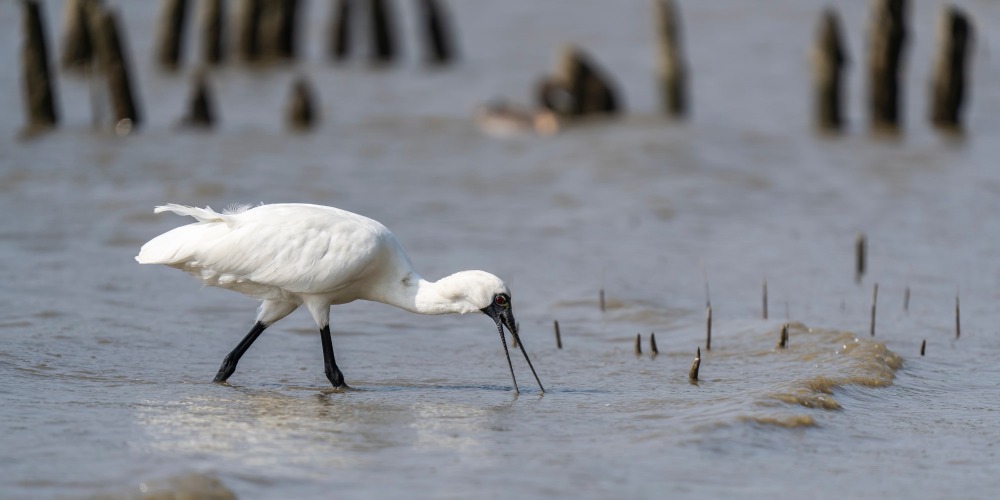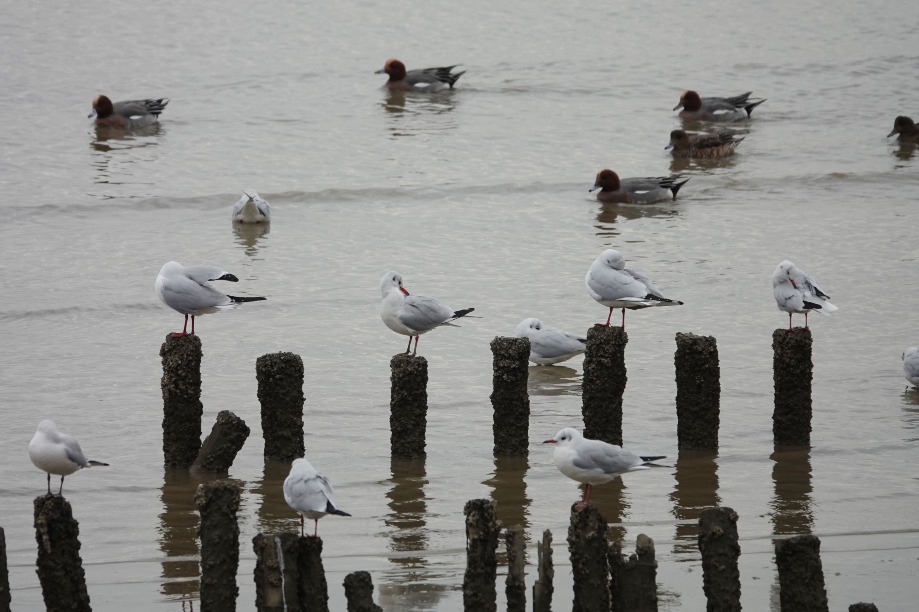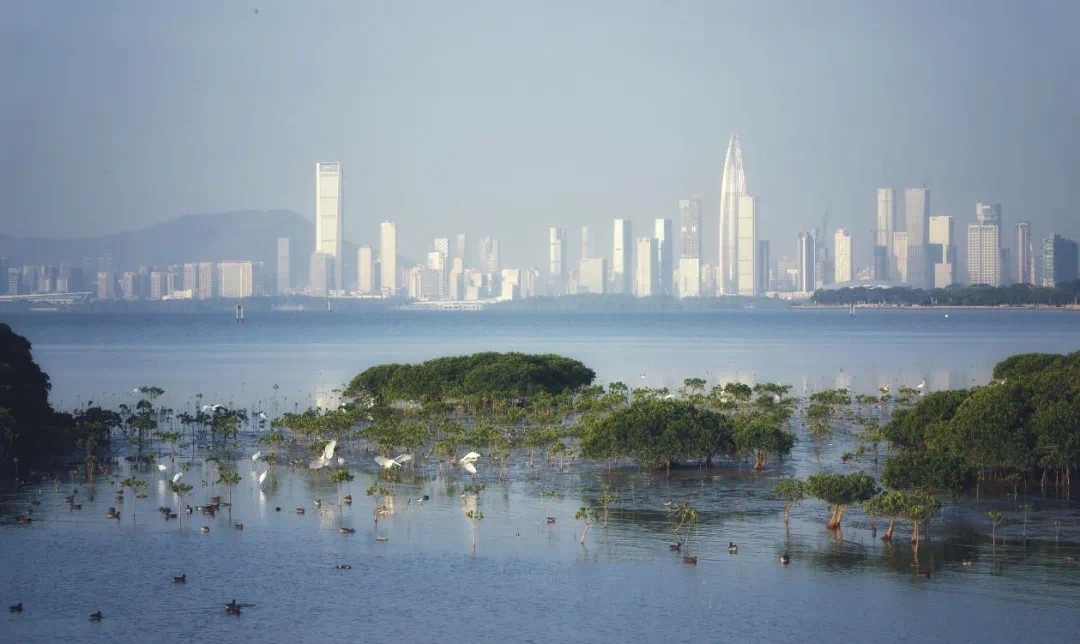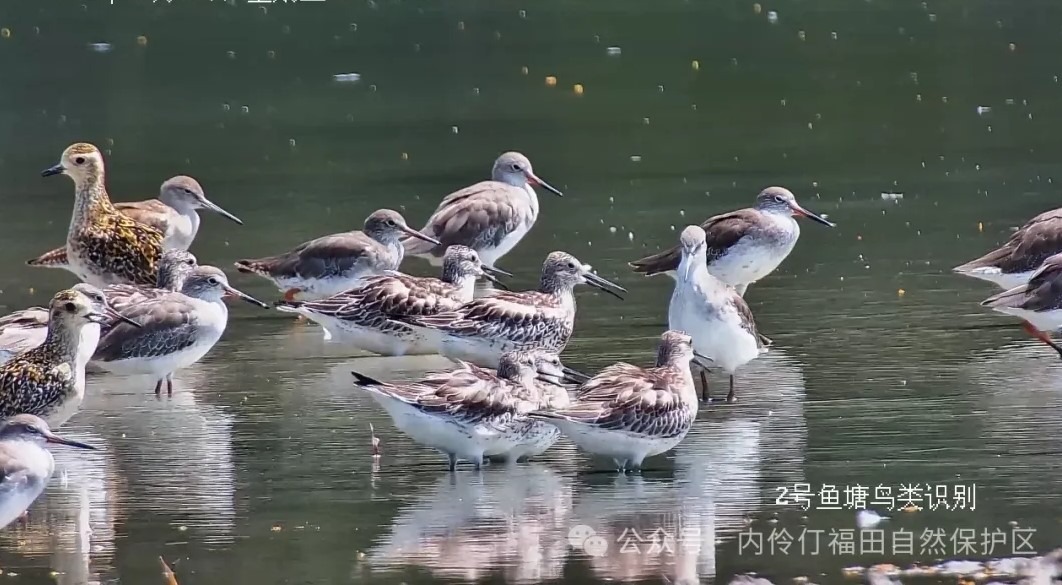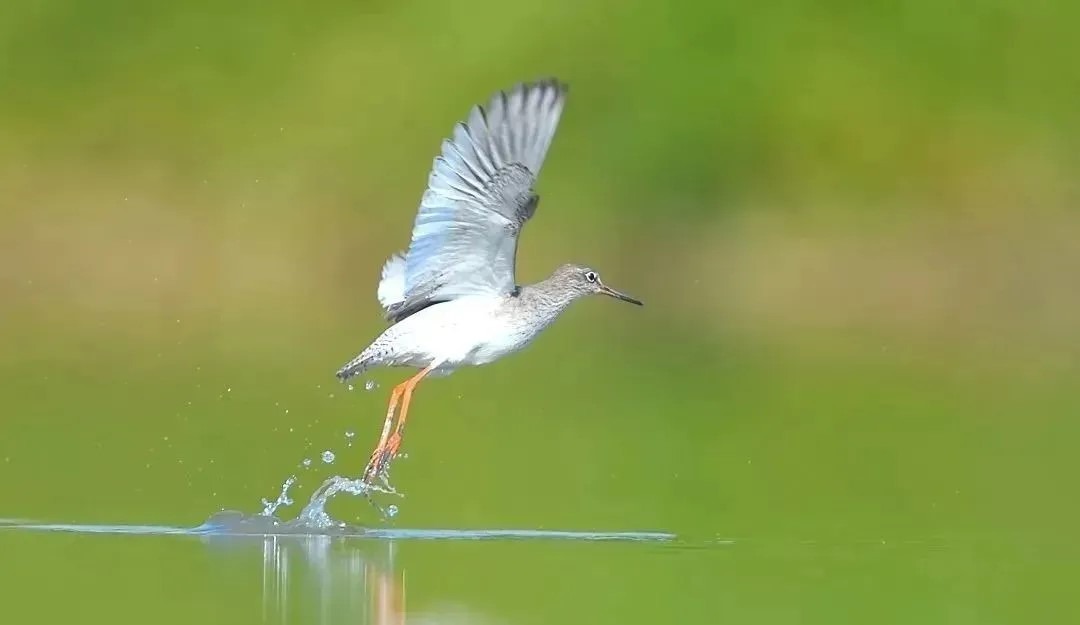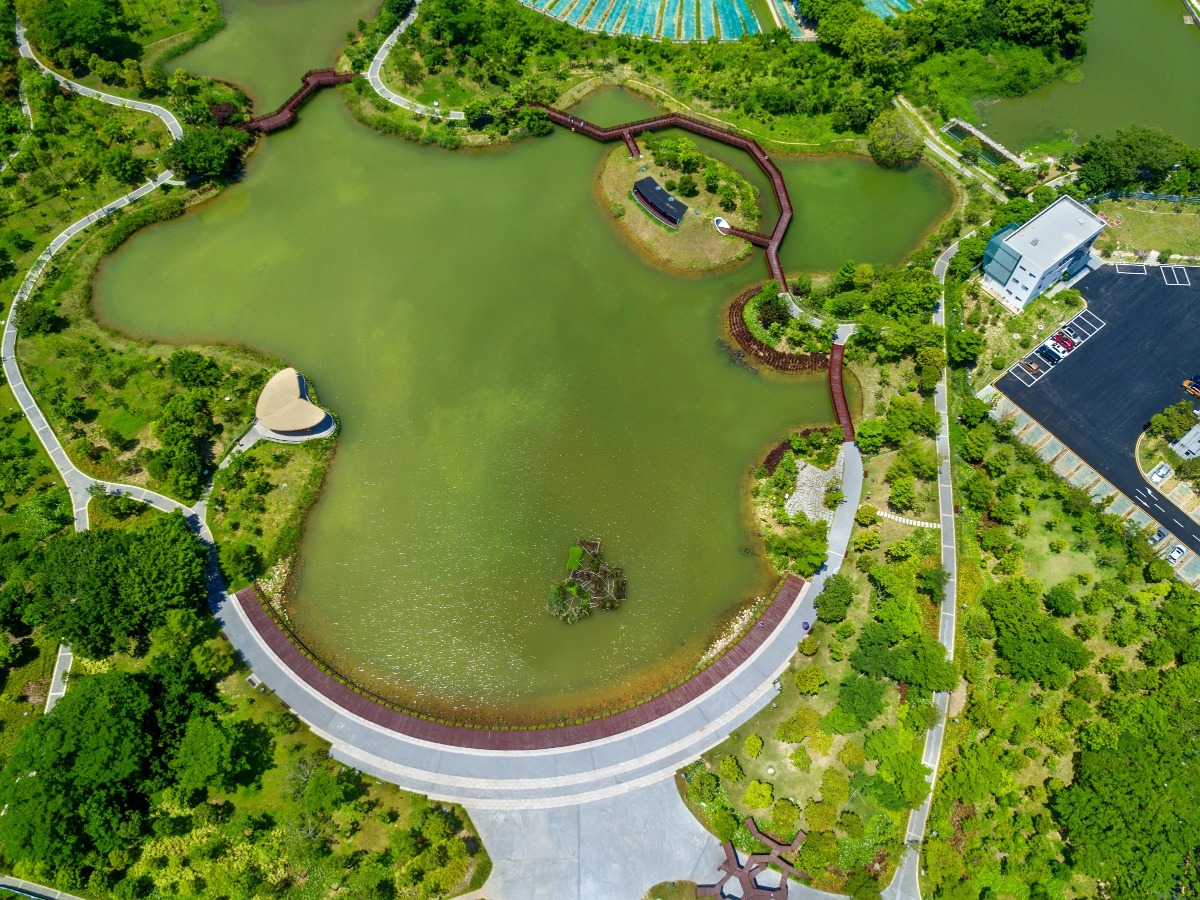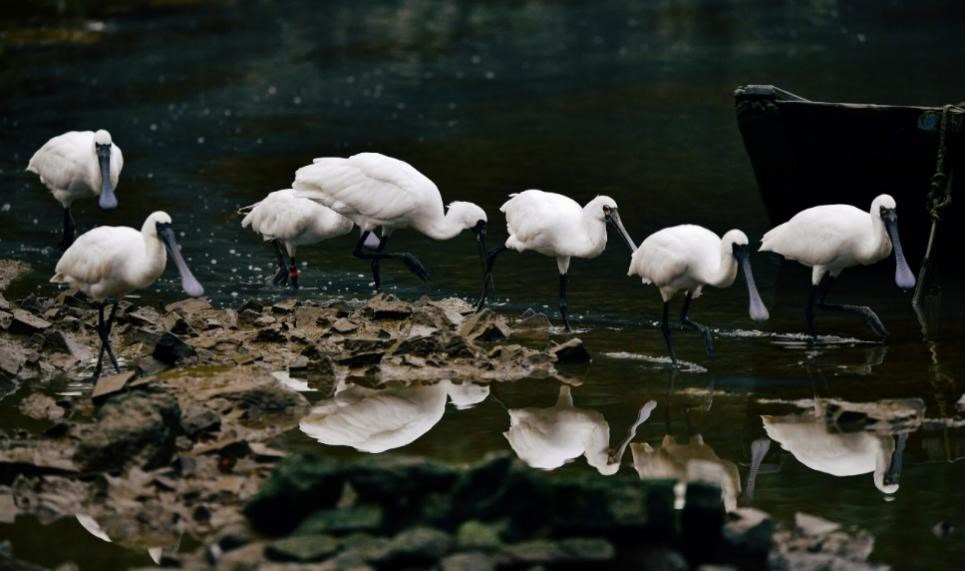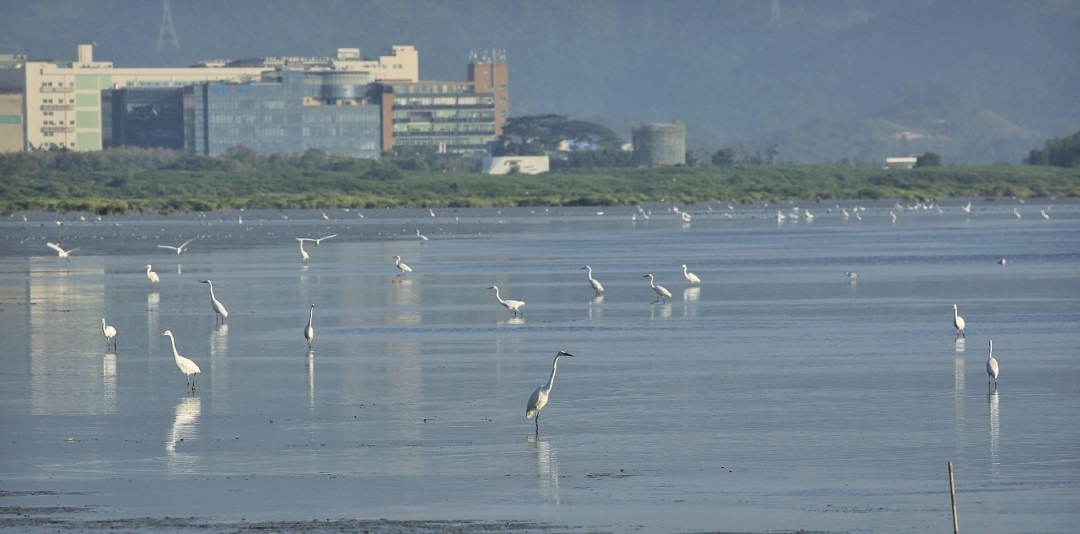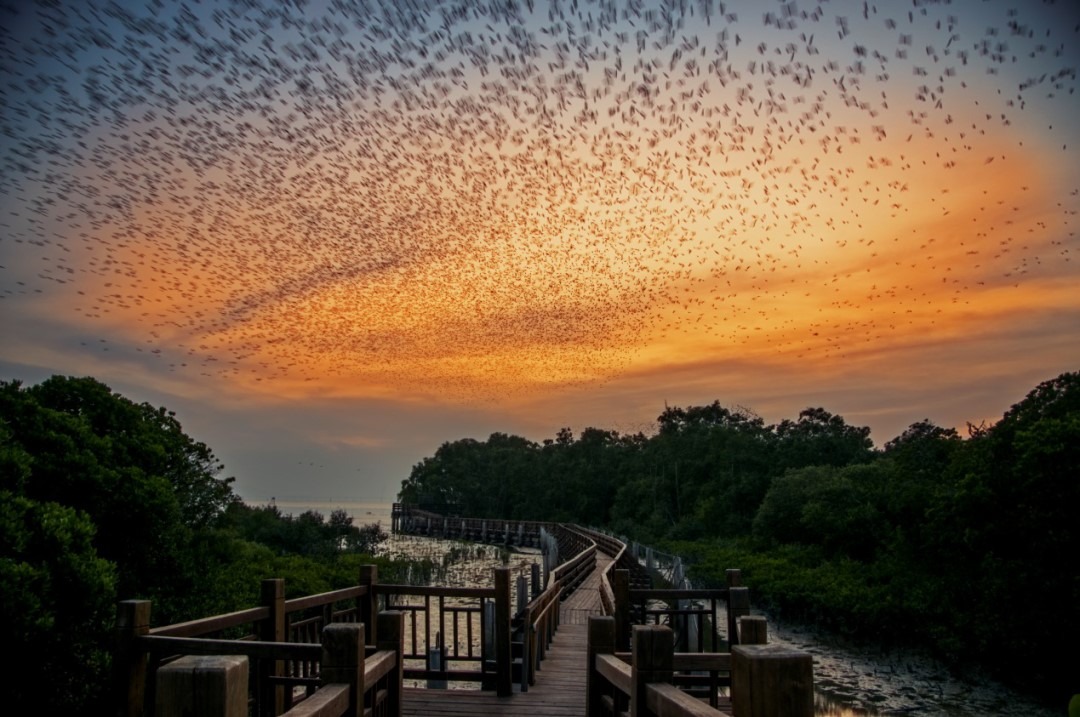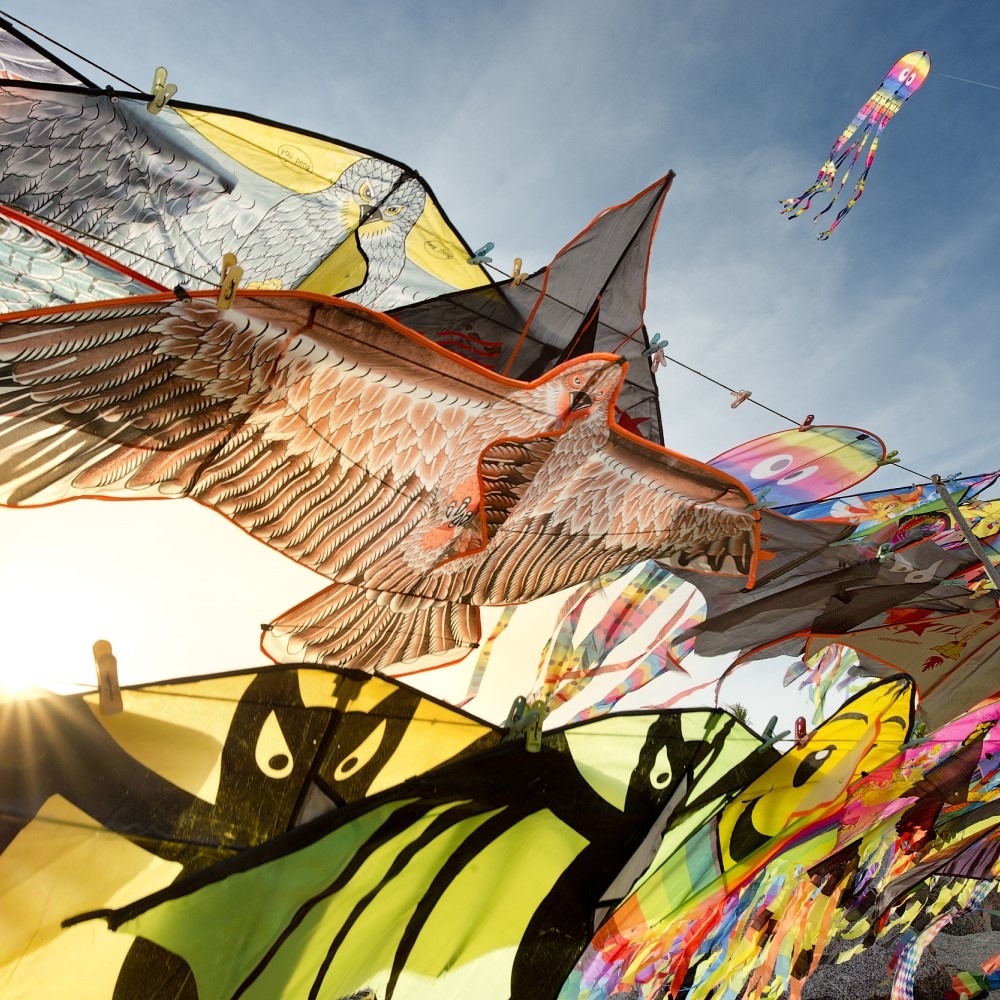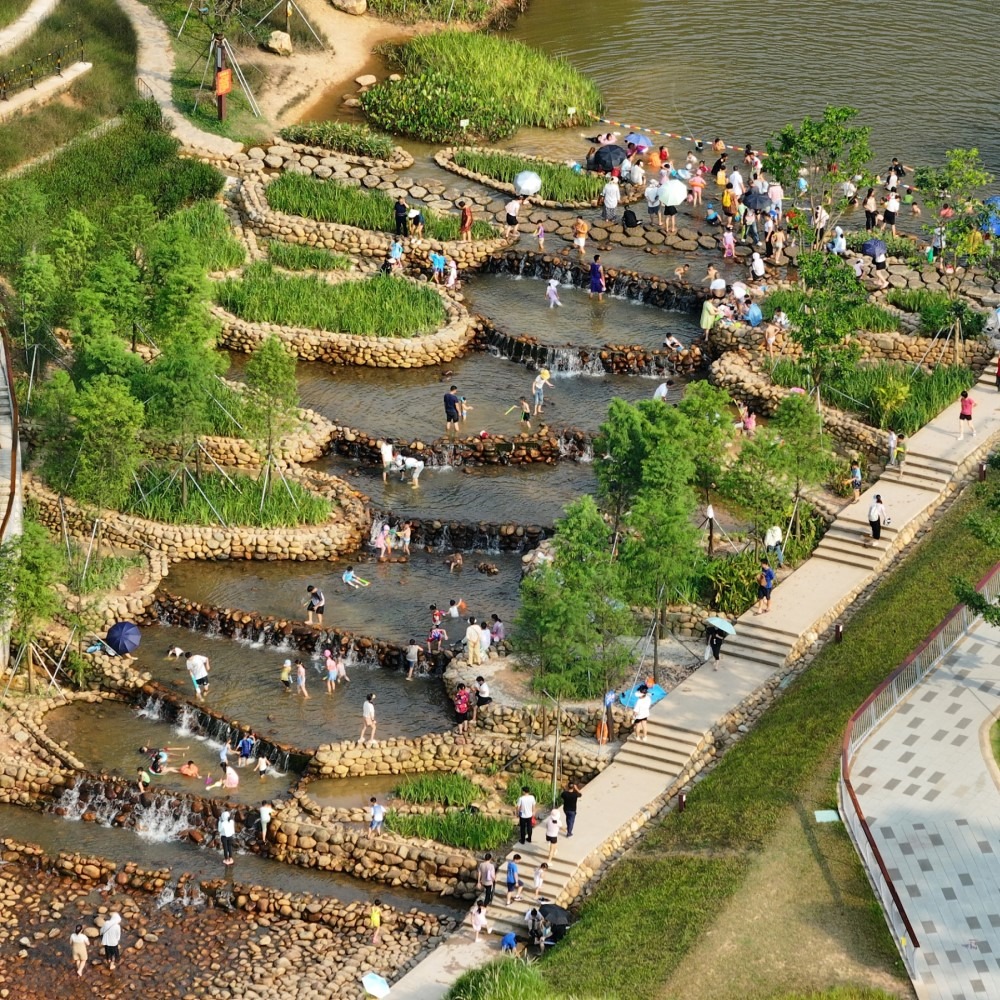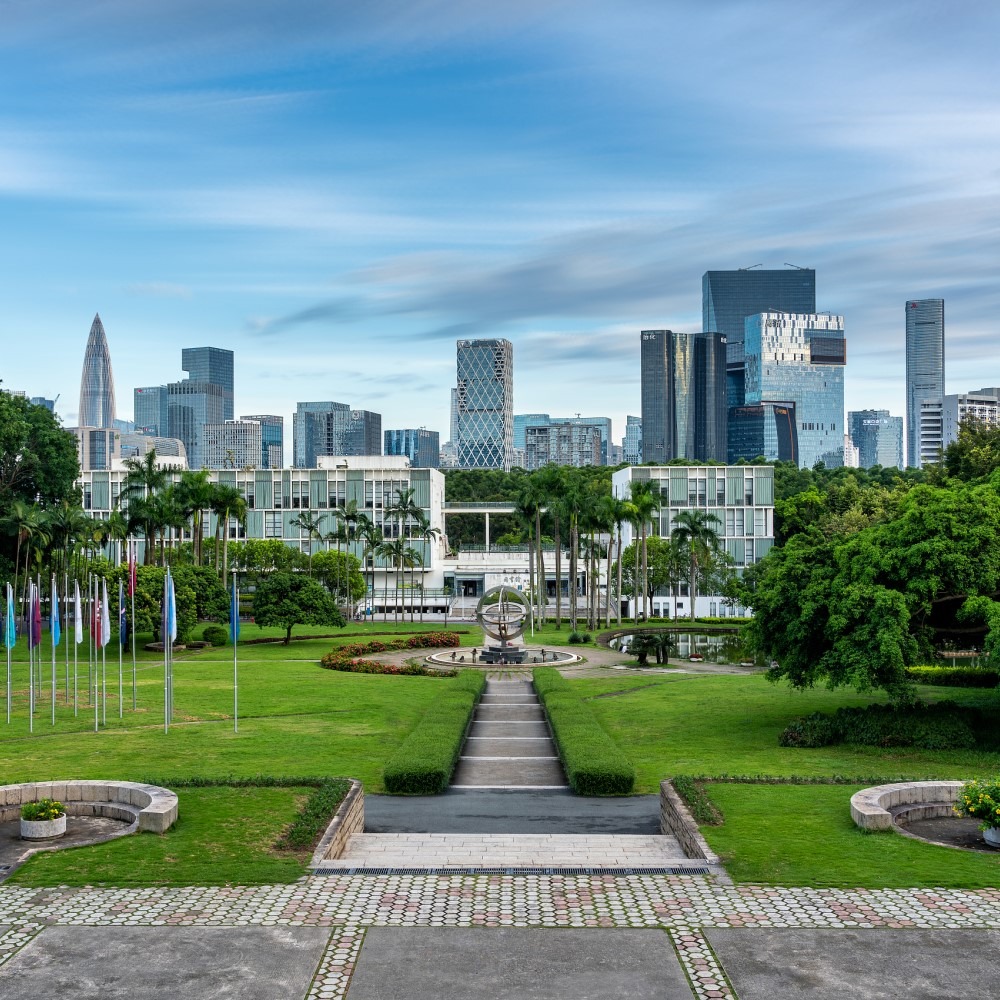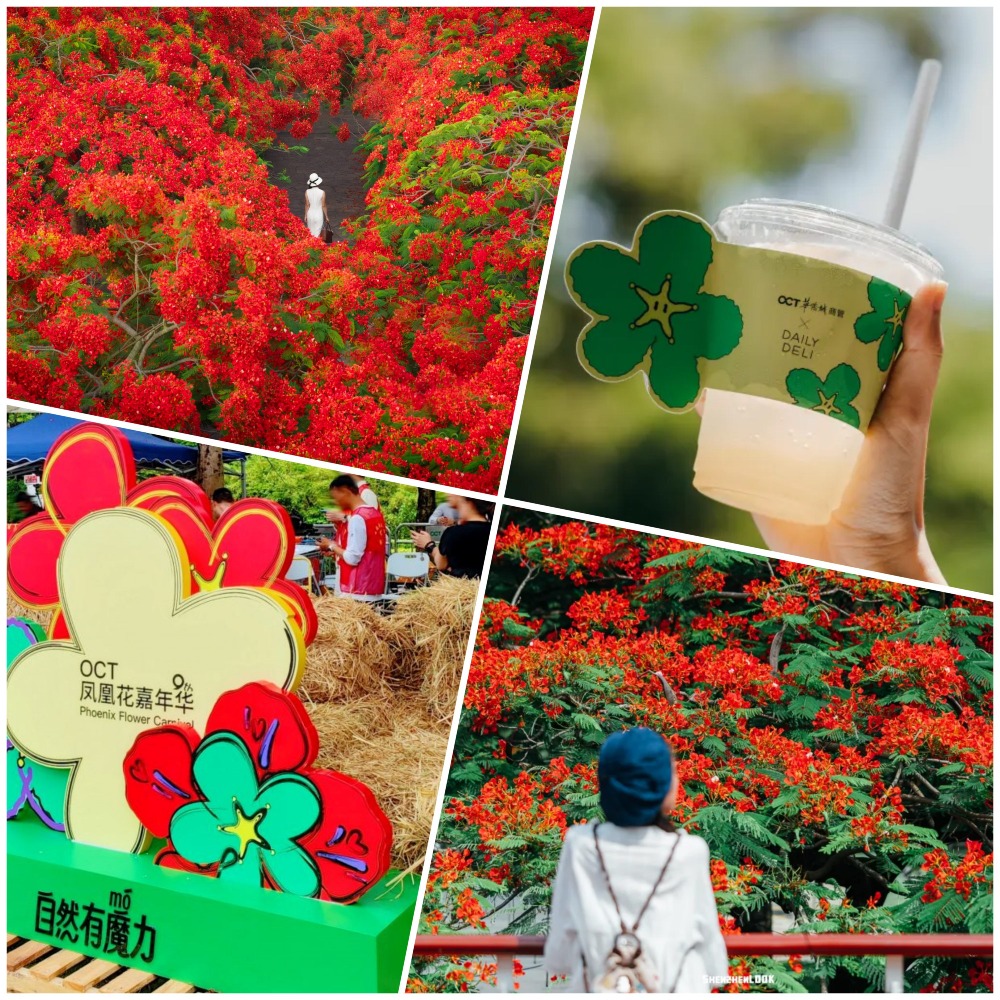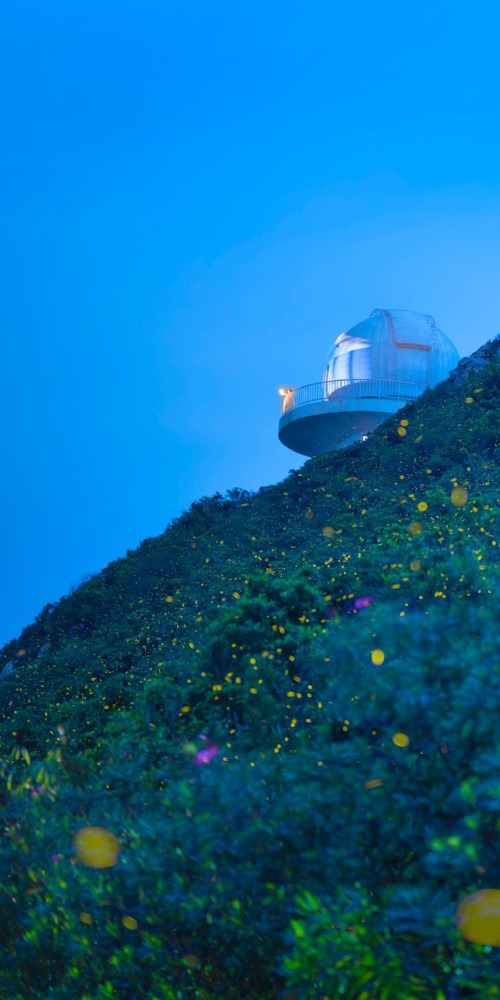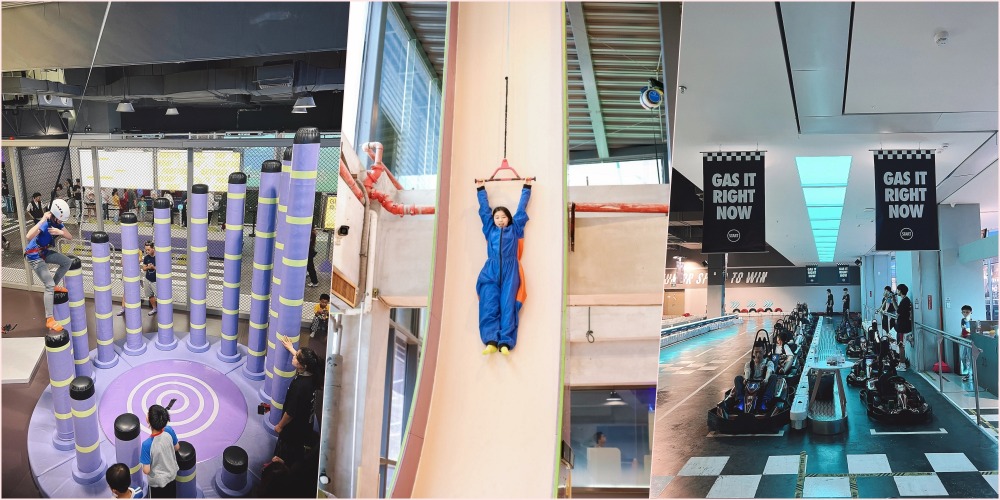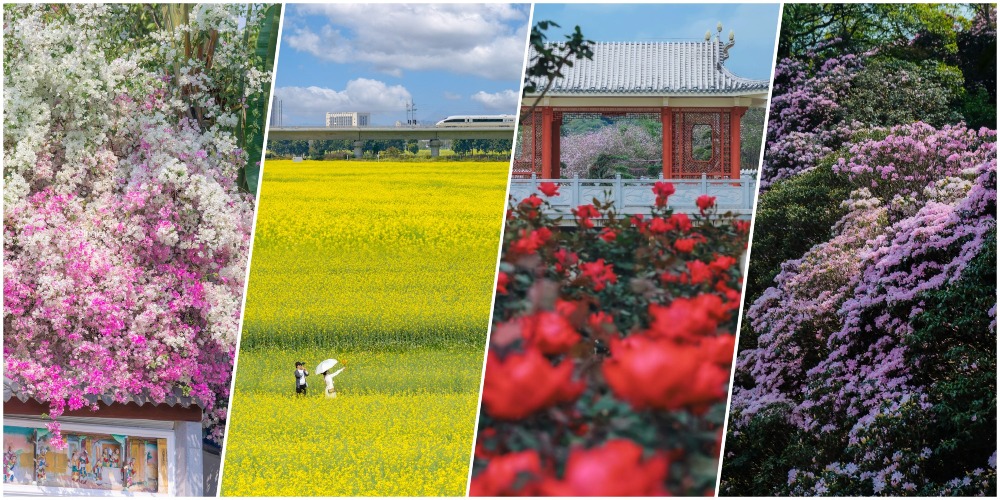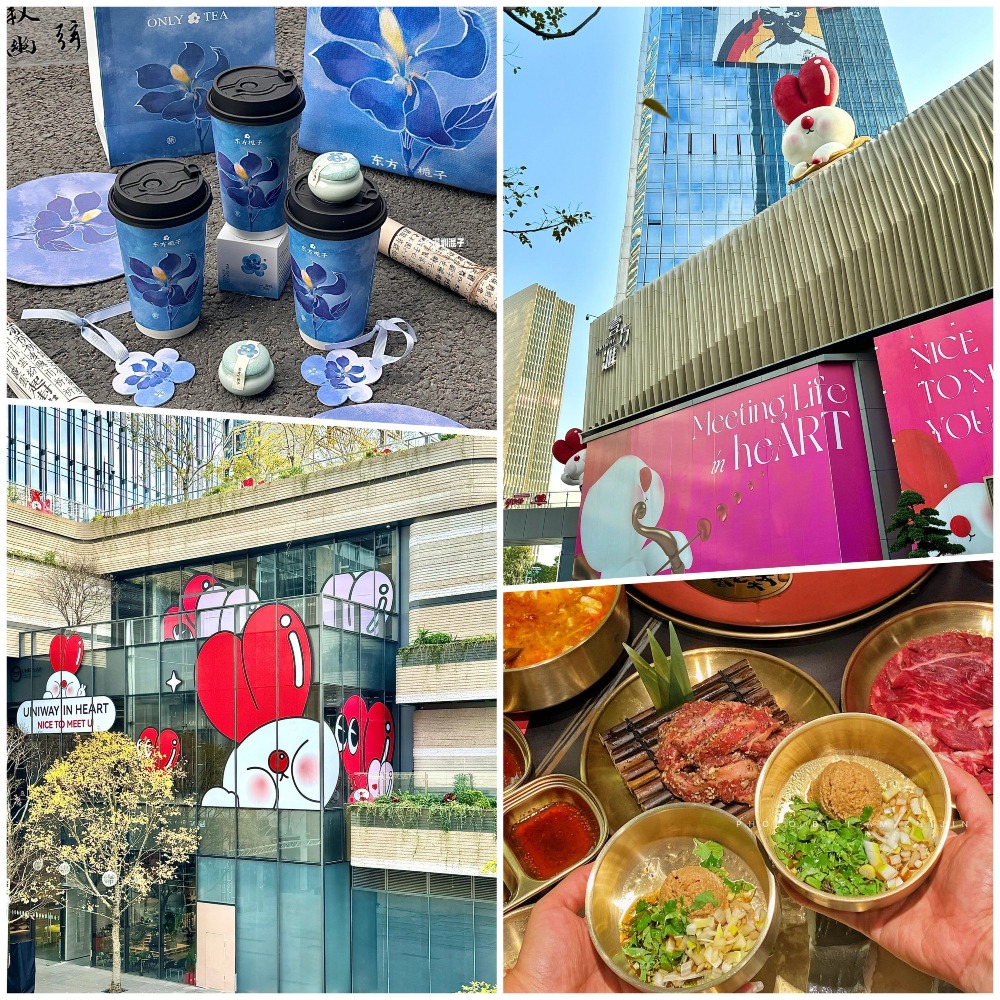Published : 2024-11-25
Shenzhen is located on the East Asian-Australasia flyway, and from November to around March each year, millions of migratory birds travel along this route, with many stopping-over or staying in Shenzhen for the winter.
This period is the main season for birding in Shenzhen, during which various migratory birds can be seen.
Let's take a look at four birding paradises here in Shenzhen!
Shenzhen birding hotspot | Shenzhen Bay Park
Starting from mid-October this year, the first batch of cormorants has already arrived at Shenzhen Bay Park, kicking off the birding season.
Located on the northern shore of Shenzhen Bay, Shenzhen Bay Park (深圳灣公園) is an international migratory bird hub and is regarded as the most famous paradise for watching international migratory birds in Shenzhen.
Best places for watching birds in Shenzhen Bay Park are the tidal-flat located in the south of Mangrove Seaside Ecological Park, Shenzhen Bay MTR Station South as well as at the mouth of Shahe River. You can see traces of the "National first-level protected wild animals" Black-faced Spoonbill here.
According to the data of 2017 from the Hong Kong Bird Watching Society, there are 3,941 critically endangered Black-faced Spoonbills (黑臉琵鷺) globally, with 375 spending the winter in Shenzhen Bay. It accounts for nearly 1/10 of the global population.
Besides, grey herons (蒼鷺), great egrets (大白鷺), little egrets (小白鷺), pied avocets (反嘴鷸), and red-billed gulls (紅嘴鷸) are also found here. Over 200 bird species have been recorded, making it the best place for people to watch and take pictures of waterfowls up close.
Shenzhen Bay Park
Address: Binhai Avenue, Shenzhen
Transportation: Metro: Line 9 Shenzhen Bay Park Station D2 Exit
Shenzhen birding hotspot | Neilingding Futian Mangrove National Nature Reserve
Neilingding Futian Mangrove National Nature Reserve (內伶仃島-福田國家級自然保護區), located on the north-eastern coast of Shenzhen Bay and adjacent to Shenzhen Bay Park, is the only national nature reserve located in the urban area of China and is the smallest one among all. It is also a popular habitat for migratory birds that you can see.
The reserve consists of Neilingding Island and the Futian Mangrove, with the latter stretching from the estuary of Xinzhou River (新州河口) in the east to Shenzhen Bay Park in the west along the coastline of about 6 kilometres long. It is the last piece of primitive mangrove wetland in Shenzhen Bay.
In 2024, "VIP guests" visited here, guess who it is? In mid-October, the staff of the Reserve observed 11 great knots (大濱鷸) through a high-definition monitoring system. It is the largest number of this bird species ever recorded in nearly a decade.
The great knot is International second-level protected wildlife, with a total migration distance of 14,000 kilometres and is making two regular round trips each year.
Interestingly, the great knot is a strong contender among the migratory birds, capable of challenging flight extremes.
Australian scientists once conducted a study and found that a migrating great knot flew from Australia to Shenzhen in two weeks.
After long-distance flying, the body weight of this great knot decreased from 278 grams to 140 grams, consuming nearly half of its weight. It is going to be the survival limit that birds can endure, showcasing its extraordinary endurance.
Apart from great knots, there are also black-faced spoonbills, cormorants, black-tailed godwits, redshanks, greenshanks, golden plovers, and many other precious migratory birds here, which make it very worth visiting.
Neilingding Island-Futian Nature Reserve
Address: No.1 Mangrove Road, Futian District, Shenzhen
Transportation:
Metro: Take Metro Line 1 and alight at Zhuzilin Station
Bus: Get off at Talent Park, HKU Hospital Station, or Jinhaiyan Garden Station
Reservation: Click "Visitor Reservation" - "Personal Reservation" on the "Neilingding Futian Nature Reserve" WeChat mini programme to make a reservation
Shenzhen birding hotspot | Futian Mangrove Ecological Park
Another migratory bird paradise in the hustle and bustle of the city is Futian Mangrove Ecological Park (福田紅樹林生態公園).
Futian Mangrove Ecological Park is a wetland park integrating science education, ecological restoration, and leisure recreation.
The park is not large, but due to its proximity to Futian Mangrove Nature Reserve, separated by a river from Mai Po Nature Reserve in Hong Kong, it is also a popular spot for migratory birds.
This used to be the pier where villagers in Shazui went out to sea. Since 2016, ecological renovation and restoration projects have been underway, and within a year, the mangrove mudflat habitat reappeared, attracting a large number of birds to inhabit and forage.
An artificial "ecological floating island" was specially constructed in the middle of Red Rain Lake in the park, where various aquatic plants were planted to provide birds with a place to inhabit and breed.
As the water level drops in autumn, it forms a shallow beach, attracting egrets, white-breasted waterhens, and other water birds to forage, creating a beautiful landscape.
In 2021, Futian Mangrove Ecological Park was officially selected as the seventh batch of National Ecological Environment Science Bases, becoming Shenzhen's first national ecological environment science base.
Futian Mangrove Ecological Park
Address: Intersection of Furong Road and Xinzhou Road, Futian District, Shenzhen
Transportation: Exit D of Yitian Station on Metro Line 3, Exit B of Shawei Station on Line 7
Note: The Science Popularization Hall requires an appointment in advance
Shenzhen birding hotspot|Fairy Lake Botanical Garden
Fairy Lake Botanical Garden (仙湖植物園) is one of the top ten birding sites in Shenzhen and is also a national 4A tourist attraction. According to China birding records, as of January 2024, more than 120 bird species can be observed in Fairy Lake Botanical Garden.
Among them, night herons (夜鷺), egrets (白鷺), and pond herons (池鷺) breed on the small island here in the Garden and can be seen all year round.
Those that are not easy to be found in the city, like scarlet minivets (赤紅山椒鳥), scarlet-backed flowerpeckers (朱背啄花鳥), Hainan blue flycatchers (海南藍仙鶲), and chestnut-bellied rock thrushes (栗背短腳鵯), are frequent visitors in Fairy Lake Botanical Garden.
Compared to the above-mentioned wetlands which are dominated by water birds, Fairy Lake Botanical Garden can be considered a paradise for forest birds.
During the non-breeding season, male and female scarlet minivets will form two groups, circling above the forest area, looking for suitable food.
If you go birding in Fairy Lake Botanical Garden, you might see this wonderful scene.
Fairy Lake Botanical Garden
Address: Fairy Lake Botanical Garden
Transportation: Metro Line 2/8 Xianhu Road Station Exit C3
Read more: 1260km²|China's Largest Wetland - Erguna
Read more: Hong Kong Wetland Park: Conservation meets leisure
